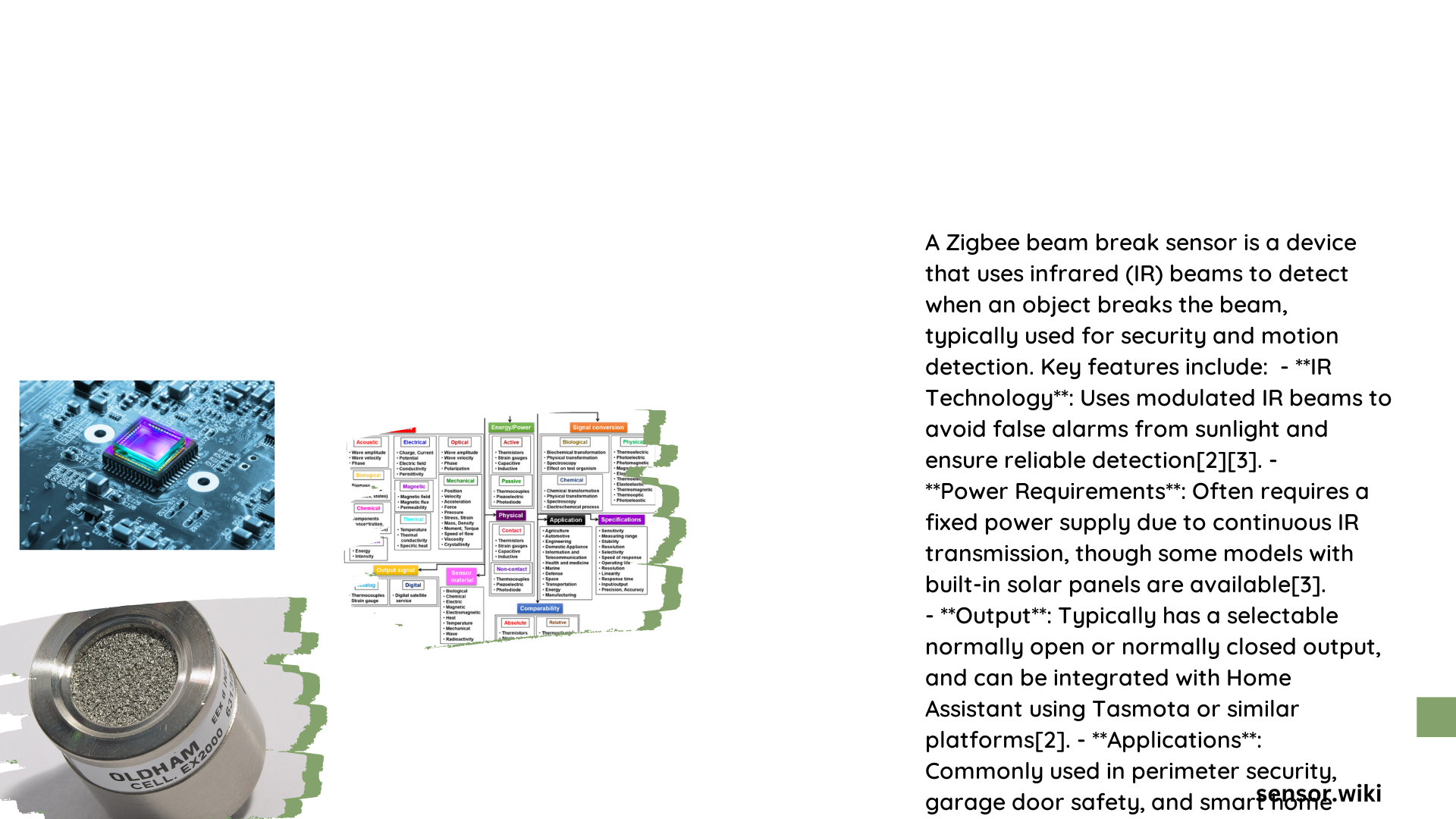A Zigbee beam break sensor represents an advanced wireless detection technology that utilizes infrared or optical beams to identify object interruption across a specific range. These sophisticated sensors leverage Zigbee wireless communication protocol to provide real-time monitoring, enabling seamless integration with smart home and industrial automation systems, offering precise motion detection, security enhancement, and automated trigger mechanisms with minimal latency and exceptional reliability.
What Makes Zigbee Beam Break Sensors Unique?
How Do Zigbee Beam Break Sensors Operate?
Zigbee beam break sensors function through a fundamental principle of interruption detection. The system comprises two primary components:
- Transmitter Unit
- Generates continuous infrared or optical beam
- Emits consistent signal across designated distance
-
Powered by low-voltage DC supply
-
Receiver Unit
- Detects incoming beam transmission
- Monitors signal integrity
- Triggers alert when beam interruption occurs
What Are the Technical Specifications?
| Parameter | Specification |
|---|---|
| Communication Protocol | Zigbee 3.0+ |
| Detection Range | 5-35 feet |
| Response Time | <2 milliseconds |
| Power Consumption | 10-20 mA |
| Wireless Range | Up to 100 meters |
Where Can Zigbee Beam Break Sensors Be Applied?
Security Monitoring
- Perimeter protection
- Intrusion detection systems
- Access control mechanisms
Home Automation
- Automated lighting triggers
- Motion-based smart home interactions
- Energy management systems
Industrial Applications
- Production line monitoring
- Equipment safety detection
- Inventory tracking
How to Install Zigbee Beam Break Sensors?
Required Components
- Zigbee-enabled beam break sensor kit
- Power supply (DC 12-24V)
- Mounting hardware
- Zigbee coordinator/hub
Installation Steps
- Select optimal mounting location
- Align transmitter and receiver precisely
- Ensure clear line of sight
- Connect to Zigbee network
- Configure detection parameters
What Are the Key Advantages?
- Low Power Consumption: Minimal energy requirements
- Wireless Connectivity: Easy network integration
- High Reliability: Consistent performance
- Rapid Response: Near-instantaneous detection
- Versatile Applications: Multiple use cases
How to Troubleshoot Common Issues?
- Check beam alignment
- Verify power connections
- Ensure no physical obstructions
- Update firmware regularly
- Test wireless signal strength
What Future Developments Can We Expect?
- Enhanced machine learning algorithms
- Improved battery efficiency
- More compact design
- Advanced multi-sensor integration
- Increased wireless range
Conclusion

Zigbee beam break sensors represent a cutting-edge solution for precise, wireless detection across diverse environments. Their robust technology, seamless integration, and versatile applications make them an essential component in modern smart systems.
